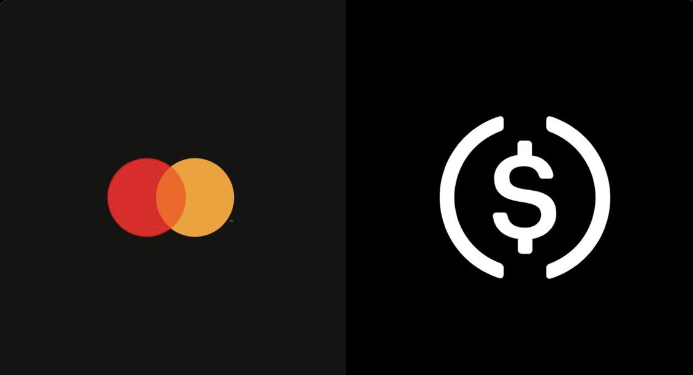
In a groundbreaking move that signals the mainstreaming of cryptocurrency, Mastercard and Circle have announced a partnership to enable USDC and EURC stablecoin payments across Eastern Europe, the Middle East, and Africa (EEMEA) This initiative leverages blockchain technology to slash transaction costs and accelerate cross-border payments, marking a pivotal step toward financial inclusion and a potential shake-up of traditional payment systems.
The collaboration builds on Mastercard’s existing infrastructure, integrating Circle’s USDC (USD Coin) and EURC (Euro Coin)—two stablecoins pegged 1:1 to the U.S. dollar and euro, respectively. These digital currencies are designed to offer the stability of fiat money while harnessing the speed and efficiency of blockchain. The partnership allows merchants and financial institutions in the EEMEA region to settle transactions using these stablecoins, reducing foreign-exchange costs and providing near-instant liquidity.
This move is not entirely new for Mastercard. The company has been piloting crypto card programs with platforms like Bybit and S1LKPAY, which already use USDC for settlements. However, extending this capability to acquirers across a diverse region like EEMEA—home to over 1.5 billion people—represents a significant scaling of its blockchain strategy. Early adopters, including Arab Financial Services and Eazy Financial Services, have reported 30% faster settlements and 20% lower liquidity costs, according to recent industry analyses (AInvest, August 28, 2025).
The EEMEA region has long grappled with inefficiencies in cross-border payments, including high fees, slow settlement times, and fragmented banking systems. Remittance corridors, a lifeline for many economies, often incur fees averaging 8% (World Bank, 2021), with delays of 3-5 days. Stablecoins like USDC promise to cut these costs by up to 70% and settle transactions in minutes, a game-changer for small businesses, gig workers, and remittance-dependent households.
Moreover, financial inclusion remains a pressing issue. In the Middle East and North Africa, only 48% of adults have bank accounts (World Bank Global Findex 2021), while Eastern Europe faces similar gaps due to volatile currencies and limited banking access. By integrating stablecoins into Mastercard’s vast network, the partnership aims to bridge these divides, offering a digital alternative that bypasses traditional banking barriers.
The timing of this announcement aligns with the explosive growth of the stablecoin market, which reached a valuation of $255 billion in June 2025, according to the Bank for International Settlements. USDC, issued by Circle, has emerged as a leader, boasting institutional trust and partnerships with major financial players. Its market share reflects a 28% dominance in the stablecoin space, fueled by a $4.5 billion valuation for Circle and a transaction volume exceeding $4 trillion (QuickNode Blog, July 2025).
However, stablecoins are not without risks. In 2023, USDC briefly de-pegged from the dollar following the collapse of Silicon Valley Bank, where Circle held a portion of its reserves. This incident underscored the vulnerabilities of centralized stablecoins, prompting Circle to diversify its reserves and enhance transparency. Mastercard’s robust security tools, such as Crypto Secure— which flagged 12,000 suspicious transactions in Q2 2025—aim to mitigate such risks, ensuring compliance with regulations like the EU’s MiCA and the U.S. GENIUS Act.
The Mastercard-Circle partnership could disrupt established players like Western Union and PayPal. With stablecoins offering lower fees and faster settlements, traditional remittance companies may need to adapt or risk obsolescence. Industry experts predict that stablecoin payment volumes could eventually surpass those of Visa and PayPal.
Beyond remittances, the initiative opens doors for broader use cases, including B2B transactions, gig worker payouts, and even government disbursements. Mastercard’s Multi-Token Network and Circle’s collaborations with entities like SBI Group and Ripple signal a vision of USDC as a universal settlement asset, potentially rivaling central bank digital currencies (CBDCs) in the future.
While the potential is immense, challenges remain. Regulatory uncertainty, competition from CBDCs, and the volatility of the broader crypto market could pose hurdles. Nonetheless, Mastercard’s infrastructure-first approach—prioritizing security, scalability, and compliance—positions it as a leader in this evolving landscape. For investors, the company’s forward P/E ratio of 32.66 reflects optimism about capturing a significant share of the projected $2 trillion stablecoin market by 2028 (AInvest, August 28, 2025).
For the EEMEA region, this partnership is more than a technological upgrade—it’s a gateway to economic empowerment. As Circle’s Chief Business Officer Kash Razzaghi noted, “This is a pivotal step toward truly borderless, real-time commerce.” With billions of people poised to interact with stablecoins unknowingly, the Mastercard-Circle alliance may well be the trojan horse that ushers cryptocurrency into the mainstream.


















